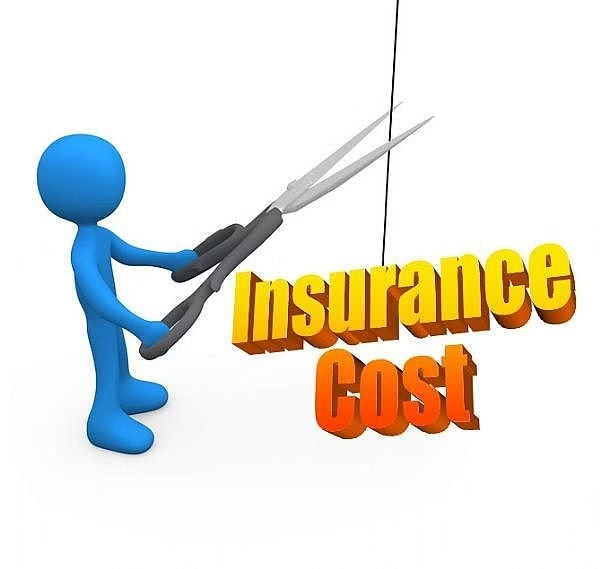Did you know that many households are overpaying for insurance due to unclaimed discounts? With the average customer saving between $500-800 annually, it’s surprising that many policyholders aren’t taking full advantage of available discounts on their auto, home, and other insurance policies.
Understanding the various discount opportunities available can help you save money on your insurance premiums. By exploring different ways to save, you can significantly reduce your expenses. This comprehensive guide will walk you through the most valuable discounts available today, explaining how they work and how to qualify for them.
Key Takeaways
- Understand the range of discounts available for your insurance policies.
- Learn how to qualify for various discount opportunities.
- Discover ways to save on auto, home, and other insurance policies.
- Maximize your savings by combining different discounts.
- Compare options across multiple insurance companies to find the best deals.
Understanding the Value of Insurance Discounts
Unlock the full potential of your insurance policy by understanding the value of available discounts. Insurance discounts can significantly impact your premium, allowing you to save money on your insurance.
Insurance companies offer various discounts to their customers, and understanding how these discounts work is crucial to maximizing your insurance savings. By combining multiple discounts, you can potentially reduce your premium by hundreds of dollars annually.
How Insurance Discounts Work
Insurance discounts are reductions in the premium amount that you pay for your insurance policy. These discounts are typically offered based on certain criteria, such as a safe driving record, bundling multiple policies, or having a good credit score. Different insurance companies have different discount structures, so it’s essential to review your policy and discuss available discounts with your insurer.
The Financial Impact of Combining Multiple Discounts
Combining multiple insurance discounts can have a significant financial impact. For instance, drivers who switch and save with Progressive save over $800 on average. By strategically combining discounts, some policyholders can save 30% or more on their premiums. The compounding effect of multiple discounts creates exponentially greater savings than any single discount alone.
As highlighted by industry experts, “The key to maximizing your insurance savings is to understand how to combine discounts effectively.” Regularly reviewing your discount eligibility can reveal new savings opportunities as your circumstances change or as insurance companies introduce new discount programs.
Vehicle-Based Insurance Discounts
The type of vehicle you drive and its safety features can lead to substantial discounts on your car insurance. Insurance companies offer various discounts based on the characteristics of your vehicle, making it essential to understand what features qualify you for these discounts.

Safety Feature Discounts
Vehicles equipped with advanced safety features can qualify for significant discounts. For instance, cars with airbags, seat belts, and/or passive restraint systems can earn you up to a 23% discount on the medical payments or personal injury portion of your car insurance. Additionally, cars with a factory-installed anti-lock braking system (ABS) can receive a 5% discount on certain car insurance coverages. Vehicles with daytime running lights as standard equipment may also qualify for a 3% discount.
Anti-Theft System Discounts
Cars with a built-in anti-theft system can earn you a discount of up to 23% on the comprehensive portion of your premium. This discount is a significant incentive to ensure your vehicle is equipped with an anti-theft device, providing both security and cost savings.
New Vehicle Discounts
New vehicles, typically those three model years old or newer, can qualify for discounts of up to 15% on certain coverage components. New vehicles usually come equipped with the latest safety and anti-theft technology, automatically qualifying them for multiple discount categories. Insurance companies offer new vehicle discounts because newer cars generally have better safety records and are less likely to experience mechanical failures that lead to accidents.
Some key benefits of new vehicle discounts include:
- Vehicles that are three model years old or newer can qualify for discounts of up to 15% on certain coverage components.
- New vehicles typically come equipped with the latest safety and anti-theft technology.
- Insurance companies offer new vehicle discounts due to the better safety records of newer cars.
Driver-Based Insurance Discounts

As a driver, you can significantly lower your insurance premiums by leveraging various driver-based discounts. Insurance companies offer discounts based on your driving habits, experience, and other personal factors.
Safe Driving Record Discounts
Maintaining a safe driving record is one of the most effective ways to qualify for insurance discounts. By avoiding accidents and traffic violations, you demonstrate to insurers that you’re a low-risk driver.
Telematics and Usage-Based Discounts
Telematics devices and usage-based insurance programs monitor your driving habits, such as speed, braking, and mileage. Safe driving practices can lead to significant discounts.
Education-Related Discounts
Education-related discounts are available for drivers who have completed specific courses or have good academic records.
Good Student Discounts
Students with good academic records can qualify for good student discounts. This encourages young drivers to maintain high grades.
Driver Training Course Discounts
Completing an approved driver training course can lead to additional discounts. This is because such courses teach safe driving practices and reduce the risk of accidents.
Policy-Based Insurance Discounts

To maximize your insurance savings, it’s essential to explore policy-based discounts. These discounts can significantly reduce your insurance premiums, making your coverage more affordable.
Insurance companies offer various policy-based discounts that can lead to substantial savings. By understanding and leveraging these discounts, you can lower your insurance costs.
Multi-Vehicle Discounts
Insuring multiple vehicles with the same provider can qualify you for multi-vehicle discounts. This type of discount is beneficial for households with more than one car, as it can lead to significant savings on your overall insurance premium.
Bundling Home and Auto Insurance
Bundling your home and auto insurance policies with the same insurer can result in considerable discounts. This practice, known as bundling, is encouraged by insurance companies as it promotes customer loyalty and can reduce administrative costs.
By bundling, you not only save on your premiums but also simplify your insurance management by having both policies with a single provider.
Loyalty and Continuous Coverage Discounts
Maintaining continuous insurance coverage without lapses can qualify you for loyalty discounts that typically increase over time. Many insurers recognize loyalty from previous companies when you switch, honoring your continuous coverage history with an immediate discount.
Loyalty discounts often start after your first renewal and increase incrementally with each subsequent year you remain with the company. Long-term customers may also qualify for additional perks, such as accident forgiveness or enhanced claims service.
Special Qualification and Payment Insurance Discounts
You can qualify for additional insurance discounts based on your affiliations, homeowner status, and payment methods.
Affiliation-Based Discounts
Many insurance companies offer discounts to individuals who are part of specific groups or organizations. For instance, some insurers have affinity programs that provide savings to employees or members of participating businesses, associations, and credit unions.
Military Discounts
If you’re an active duty, retired military personnel, or a member of the National Guard or Reserves, you may be eligible for a discount of up to 15% on certain car insurance coverages through insurers like GEICO.
Professional Organization Discounts
Some insurers offer discounts to members of certain professional organizations. It’s worth checking with your insurer to see if they have any such programs available.
Homeowner Discounts
If you own a home, you could be eligible for a discount on your policy just for being a homeowner. This discount is usually available because homeowners are seen as more responsible and less of a risk.
Payment Method Discounts
The way you pay your insurance premiums can also impact your costs. Opting for certain payment methods can lead to additional savings.
Pay-in-Full Discounts
Paying for your policy in full up front can earn you a discount. This is because it reduces administrative costs for the insurer.
Paperless and Auto-Pay Discounts
Setting up automatic payments and opting for paperless billing can also qualify you for discounts. These discounts can range from 2-5% on your premium. By reducing administrative costs and the risk of missed payments, insurers can pass the savings on to you.

- Opting for electronic policy documents and automatic payment arrangements can qualify you for discounts.
- These discounts can typically be combined with other payment discounts for maximum savings.
- Setting up these discount-eligible options usually takes just a few minutes through your insurer’s online account portal.
Conclusion: Strategizing to Maximize Your Insurance Savings
By understanding and leveraging the right insurance discounts, you can achieve considerable savings on your car insurance premiums. Strategically combining multiple discount categories can potentially reduce your insurance premiums by 30-40%, translating to hundreds or even thousands of dollars in annual savings.
To maximize your savings, it’s essential to regularly review your discount eligibility as your circumstances change. This can reveal new savings opportunities you didn’t previously qualify for. Comparing discount structures across multiple insurance providers is also crucial, as the company with the lowest base rate may not offer the best final price after all discounts are applied.
- Maintain documentation of your discount qualifications to easily verify eligibility during policy reviews or when switching insurance providers.
- Create a personal discount maximization strategy based on your specific circumstances to prioritize which discounts to pursue first.
- Balance discounts with ensuring you have appropriate coverage levels to protect your assets adequately.
Working with an insurance professional who understands the full range of available discounts can help identify savings opportunities you might otherwise miss. By following these strategies, you can save money on your car insurance and ensure you have the coverage you need.
FAQ
What are the most common factors that affect my car insurance rates?
Your car insurance rates are influenced by several factors, including your driving record, the type of vehicle you own, your age, and where you live. Maintaining a safe driving record and installing safety features in your vehicle can help lower your premiums.
How can I qualify for a good student discount on my auto insurance?
To qualify for a good student discount, you typically need to be a full-time student and maintain a certain grade point average, usually a B average or higher. You may need to provide proof of your grades to your insurance provider to receive the discount.
Will installing an anti-theft system in my vehicle lower my insurance premiums?
Yes, installing an anti-theft system can help lower your insurance premiums. Many insurance companies offer discounts for vehicles equipped with anti-theft devices, as they are less likely to be stolen.
Can I get a discount if I bundle my home and auto insurance policies?
Yes, many insurance companies offer a multi-policy discount when you bundle your home and auto insurance policies with them. This can be a convenient way to save money on your insurance premiums.
How does a safe driving record impact my car insurance rates?
Maintaining a safe driving record can significantly lower your car insurance rates. Avoiding accidents and traffic violations demonstrates to insurance companies that you are a responsible driver, which can lead to lower premiums.
Are there any discounts available for drivers who complete a defensive driving course?
Yes, some insurance companies offer driver training or defensive driving course discounts. Completing a state-approved course can help you qualify for lower premiums.
Can paying my premium in full upfront help reduce my insurance costs?
Yes, some insurance companies offer a payment method discount when you pay your premium in full upfront. This can be a convenient way to save money on your insurance premiums.




